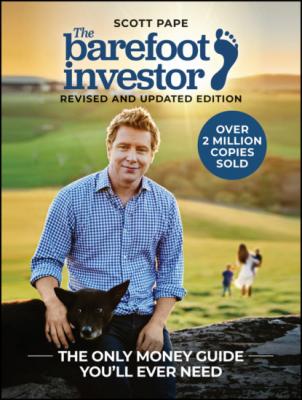The Barefoot Investor. Scott Pape
Чтение книги онлайн.
Читать онлайн книгу The Barefoot Investor - Scott Pape страница 14

What you want is separate online saver accounts that are linked to your everyday transaction account.
In addition, you want the ability to move your money when needed and to set up automated triggers (we'll get to that later in Step 2, where we'll put your money on autopilot so you don't have to continually make decisions).
My linked high-interest online savings accounts
Back in 2016, for high-interest online savings accounts I used ING Savings Maximisers that were linked to my ING Orange Everyday account.
I want you to set up two of these accounts — and again I want you to give them nicknames. Call one ‘Smile’ and the other ‘Fire Extinguisher’.
(WTF, Barefoot! These names are getting crazier by the minute! Trust me on this and I'll explain all in Step 2.)
Here's a screenshot of my set-up.
By the way, with these online saver accounts I am not a ‘rate tart’. I have no interest in switching accounts every time some other institution offers a piddly 0.15 per cent extra interest. It's just not worth my time.
(You may have more time on your hands, perhaps because you live at home with your mum and she does your ironing and plaits your hair, leaving you free to pore over spreadsheets on a Saturday night. If that's you, feel free to check out comparison sites like RateCity, Mozo or finder.com.au, where you can usually find bank accounts paying a bee's dick — another finance term — more interest than the one you have chosen.)
In summary:
Zero fees. Good interest. All in one account.
Simple.
In any event you'll notice that I deal exclusively with online banks for these accounts. There's a reason for this: they do better deals because they've got lower overheads.
Plus, they're fighting against the Big Four, who rely on a mixture of apathy and a reputation for safety (which is rubbish, because the government guarantees all deposits — up to $250 000 per financial institution — for all local and international authorised deposit-taking institutions).
Get some Mojo, baby
Finally, you should have one bank account completely separate from your day-to-day banking.
I'm talking another financial institution altogether.
Why?
Because I want to make it hard-ish to get at this money. This account will become what I call your ‘Mojo’.
The aim of the Mojo account is to get your Mojo back, baby. So you don't have to stress about money like everyone else.
So what is it?
Well, it's not a redraw facility. It's not shares.
It's cold, hard cash in the bank.
And it's hard to access. You see, managing your money is about behaviour.
Most people shuffle money around from one account to another without ever actually saving any of it.
Now, the number one question people ask me about Mojo is this:
‘Barefoot, can't I use my offset account for my Mojo?’
My answer?
It's not how I did it, but sure, you can if you want. The most important thing is that you do it!
My Mojo account
Back in 2016, my Mojo account was a UBank USaver (UBank is NAB's ‘Jetstar’ brand).
You know the drill: zero fees, good interest. Google it.
No prizes for guessing the nickname this time: ‘Mojo’.
As I've said, I deliberately keep this account separate from my day-to-day banking because I don't want to be tempted to spend it. It's for emergencies like, say, your house burning down. And it's a good feeling knowing that you have a separate pot of money that can be your ‘get out of jail free’ card when you need it.
And if you have a mortgage…
When I had a mortgage, I was given a ‘professional package’ by the bank, which included a credit card (I chopped it up) and a basic bank account.
If you have a home loan, you've probably got a professional package too. Everyone gets one. It's a marketing gimmick designed to flog you as many high-cost products as possible.
I tried to screw down the same deal with my home loan provider as ING's zero-fee, high-interest-earning banking (and zero international ATM fees). They just laughed at me. So I made ING Orange Everyday my ‘Money HQ’ and organised a direct debit to my home loan.
Simple.
Right, I've mentioned a few accounts so far, but maybe it's not quite clear in your mind. So I'm going to put it all together on a ‘menu’ for your Barefoot Date Night …
Note to future readers
If you've just picked up this book and it's 2027, perhaps ING and UBank aren't around anymore. It doesn't matter — they're just examples. The same rules apply: no fees. Ever. Always use internet banking (or whatever it is you call the internet now). And always get high rates of interest on your savings.
BAREFOOT DATE NIGHT MENU
Week 1
Choose somewhere really fancy for your very first Barefoot Date Night.
Trust me, you can afford to splurge — you're about to save yourself thousands of dollars in just 10 minutes.
ENTREE:
Whip out your phone and apply for:
2 × everyday transaction accounts — call them ‘Daily Expenses’ and ‘Splurge’ and get an ATM card for each (it's easier if you get your ‘Daily Expenses’ card first, then simply open another account for ‘Splurge’)
2 × online savings accounts — call them ‘Smile’ and ‘Fire Extinguisher’ and link them both to ‘Daily Expenses’.
The entire process takes 10 minutes and can be done on your phone between entree and main course.
MAIN COURSE:
Next,